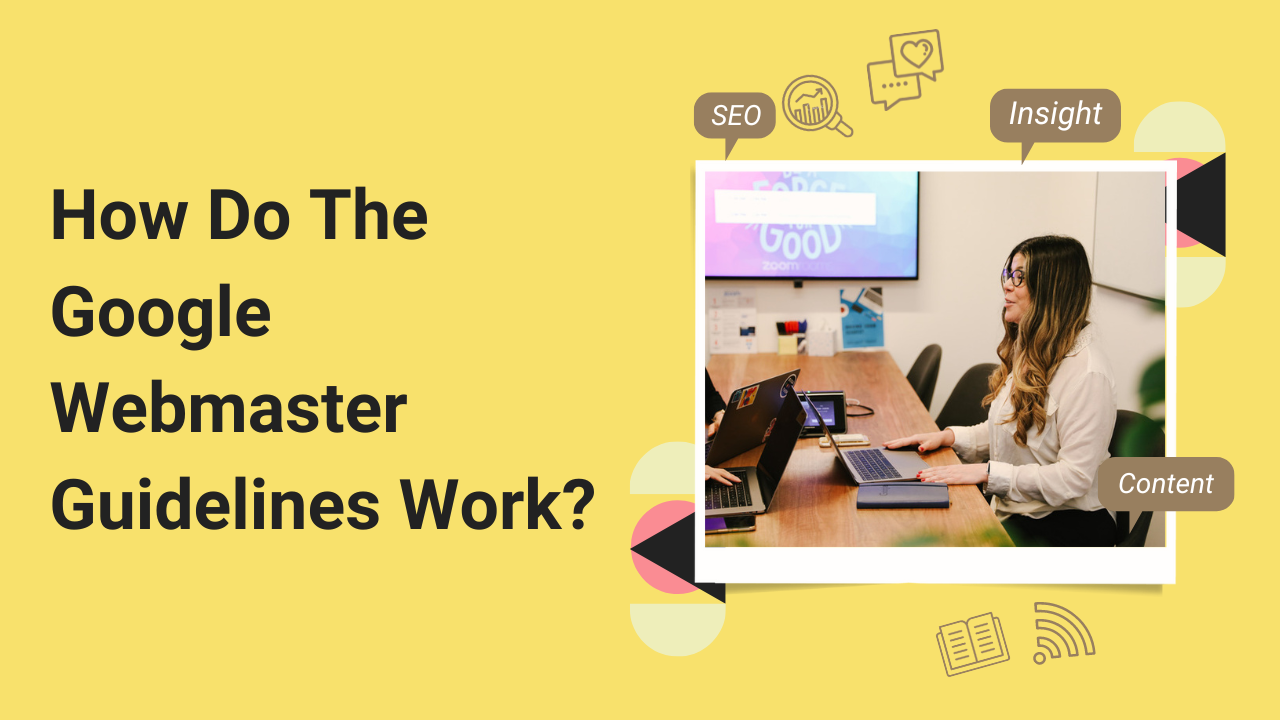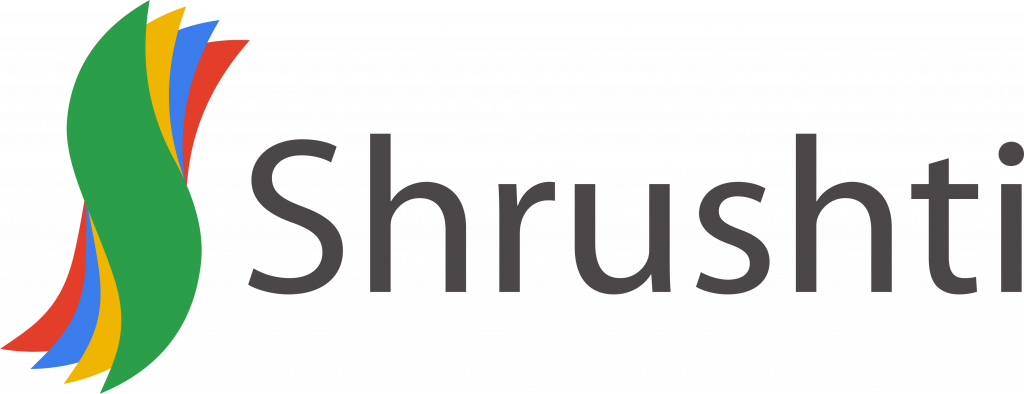
Table of Contents
You can build your site to show up in Google search results by following webmaster guidelines, which are more general best practices.
The site may not appear in search results if you do not follow these guidelines.
Google SERPs (search engine results pages) look their best when your site follows the general guidelines.
Guidelines that pertain specifically to specific types of content such as images, videos, and other types are called content-specific guidelines.
A quality guideline is a list of all the techniques that are prohibited and will cause your page to be banned from the search engine results page.
A manual action can also be taken against your site if you use these techniques.
The goal of these guidelines is to ensure that your content is not spammy and that it is written for people and not for search engines.
However, it is not as easy as it seems. Websites that comply with Google’s Webmaster Guidelines can be challenging to design.
You have already surpassed the first hurdle by understanding them completely.
Now your websites must be compliant with these guidelines once they are applied. However, practice makes perfect when it comes to SEO!
Relevance Is Key When Choosing Keywords
It should be easy for people to find your site. It is important to consider keywords in the page title and meta description of top-ranking sites, as this gives you insight into keyword relevance.
Finish projects without feeling frustrated.
Leave deadlines to our experienced freelancers who can complete every task before the deadline – thus ensuring your business stays productive.
Alternatively, you can analyze your competitors’ top-ranking websites within your niche. It is possible to identify how keywords are used on sites through a number of tools.
What are Webmaster Guidelines
Definition
It is a set of guidelines set forth by search engines like Google and Bing for webmasters.
Websites need to be optimized in order to be found by search engines in a way that is optimal. These regulations provide guidance on how to do that. In addition, webmaster guidelines describe what webspam actually is and what consequences webmasters should expect when they violate the guidelines.
Google webmaster guidelines: what do they say?
In addition to the Google SEO guidelines, the Google guidelines are also known as Google guidelines for webmasters. The guidelines for webmasters at Google are divided into two general sections: Guidance for webmasters and Guidelines for webmasters.
- General Guidelines: This section of Google is divided into three main categories, which are crawling, indexing, and usability. Google provides tips and tricks on how its crawler can find URLs more effectively in the crawling section. Search engine giant Google explains what webmasters should watch out for in its indexing section so that it can efficiently recognize and index content. An image’s ALT tag must also contain appropriate titles for a website. Searching for keywords is also part of it. Including mobile optimization and references to good performance with a short loading time, the usability section focuses on measures that provide users with a convenient and secure web experience.
- Quality guidelines: It is very clear what quality guidelines are in Google’s definition. Search engine optimization professionals should not entertain the notion of finding and exploiting bugs in Google. They should instead pay close attention to the guidelines for quality content. According to Google, websites can be reported for alleged spamming. It is important to follow the quality guidelines outlined in the search engine optimization quality guidelines. Search engines should not be the primary focus of websites, as Google says. Don’t deceive your users. It is also important that each website be unique and stand out from the rest. There are several spamming techniques listed under the “concrete recommendations” section that violate Google’s webmaster guidelines. Participating in link exchange programs or cloaking are examples of this. The search engine company also counters search engine spam by removing copied (aka duplicated) content or doorways. These guidelines clearly state that the list of items is not exhaustive. Thus, Google may also consider methods not explicitly listed there as spam.
In the Google SEO starter guide, the Mountain View-based search engine company offers specific details about search engine optimization. In the SEO starter guide, key aspects of optimizing websites are covered. Bing webmaster guidelines contain a number of these tips and optimization tips.
Why do webmasters need guidelines?
Search engine providers specify the framework for compliant search engine optimization through the publication of general guidelines for webmasters. If you follow these rules, your site is unlikely to be penalized and you can expect it to consistently rank high.
Search engines want to link to “good” websites in the search results, so the guides serve a larger purpose. Users are more satisfied with the sites that appear in the SERPs when they are of higher quality. As a result, search engine trust increases. The majority of their revenue comes from advertisements in organic web searches, which means high-quality websites benefit search engines.
The search engines remain secretive about their algorithms, even if their webmaster guidelines spell out exactly what is and isn’t allowed in online marketing. In this way, Google optimizes for ranking within the search engine, and not for the user’s intent, preventing SEOs from only optimizing for ranking within the search engine.
Are SEOs and webmasters held accountable if they violate the guidelines?
Sites, directories or an entire domain can be penalized if they violate Google or Bing guidelines. This leads to a significant drop in the ranking of the corresponding sites and, consequently, a decrease in their visibility. Most penalties are temporary and are removed when the webspam is eliminated. By devaluing incoming backlinks with the Google Disavow Tool, for instance, offpage optimization can be achieved. A domain can be excluded from search engine indexes, however, if very serious spam activities are involved.
Is there a place where I can find the Bing and Google webmaster guidelines?
What are the benefits of following the guidelines for SEO?
The instructions are a guide to help webmasters and SEOs optimize their websites. This is determined by the search engines. As a result, it becomes evident which measures may not immediately result in ranking losses but nevertheless will inevitably result in domain failures.
When search queries and visits to websites fall, for example, one should check the content, the links, or other parts of the site to see if they are violating search engine rules. As a result of both its algorithms and quality rater, Google has become better and better at detecting web spam. When SEOs choose spam measures that Google hasn’t detected yet, it doesn’t pay off to count on short-term successes.
Websites with inferior content should be avoided
In order to meet Google’s quality guidelines, webmasters should avoid the following.
- Automatically generated texts and content
- Lack of content on websites
- Links exchanged and links purchased
- Cloaking
- Text hidden beneath the fold
- Links that are hidden
- A doorway
- Plagiarism
- Without any added value for users, affiliate sites
- Keywords used on the target site that are irrelevant
- Sites with malicious software, phishing scams, or viruses infecting users’ devices
- The creation of rich snippets with excessive markup
Webmaster Guidelines From Google Are In fact just Guidelines
Search engine optimization experts should consider Google’s Webmaster Guidelines as guidelines. There’s no reason why they can’t be viewed as “guidelines” rather than rules.
Beware – if you violate these rules seriously, you could be erased from Google’s SERPs. Personally, I prefer staying out of Google’s way. The manual approach is cumbersome.
We warned you. Don’t say we didn’t.
A penalty can take many forms, ranging from devaluation to manual actions. Whether such actions are necessary will depend on the severity of the violation.
Penguin issues can also devalue pages and folders. It is important to remember that Penguin’s granular nature is inherent to real-time analysis.
There are, however, some violations of guidelines that will not result in penalties. This can also have an effect on your rank if it results in crawling and indexing issues. There are other circumstances that will result in a more manual action, such as spammy links to your site.
Maintaining calm when confronted by a manual action is crucial. Links from spam on your site or another form of spam have likely brought this on yourself.
You can try to remove the manual action by working with Google to investigate.
The general rule is that if you have been in trouble for a long period of time, it will take a similar amount of time to get out of trouble in order to return to their good side.
Sometimes the site is so awful that there is no choice but to nuke it and start from scratch.
You should be able to tell if you have gotten into serious trouble using certain techniques once you have this knowledge.
Apart from that, you can definitely benefit from following Google’s guidelines from day one.
In comparison to more aggressive methods, results may be slower with this method, but it is highly recommended. You do not have to suffer through an algorithmic or manual devaluation and will maintain a more stable online presence.
It’s up to you.
About the Author
My name’s Semil Shah, and I pride myself on being the last digital marketer that you’ll ever need. Having worked internationally across agile and disruptive teams from San Fransico to London, I can help you take what you are doing in digital to a whole next level.



